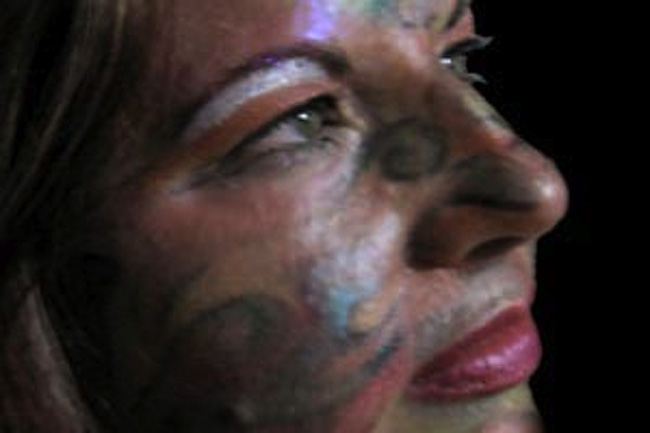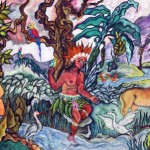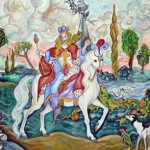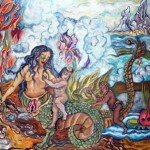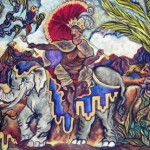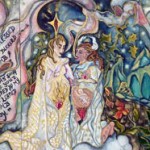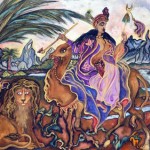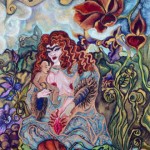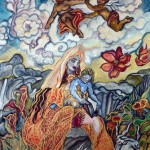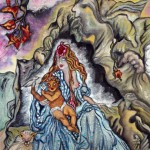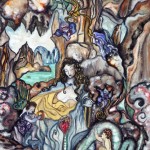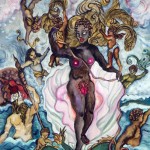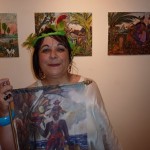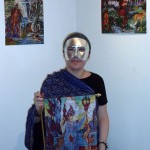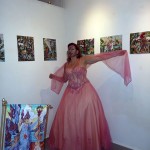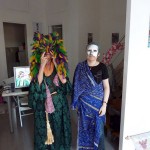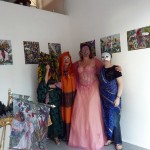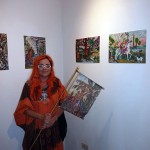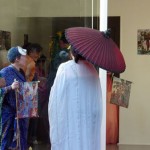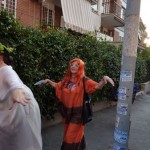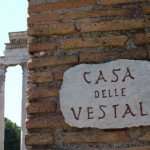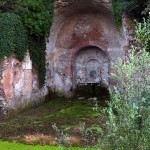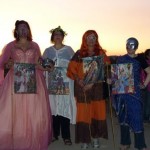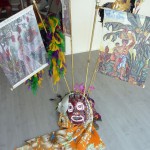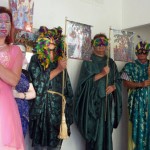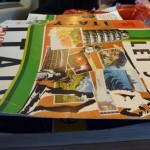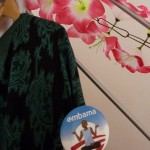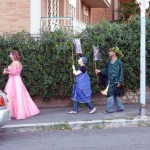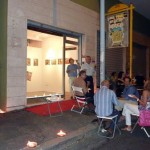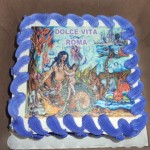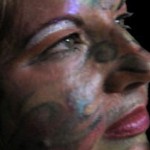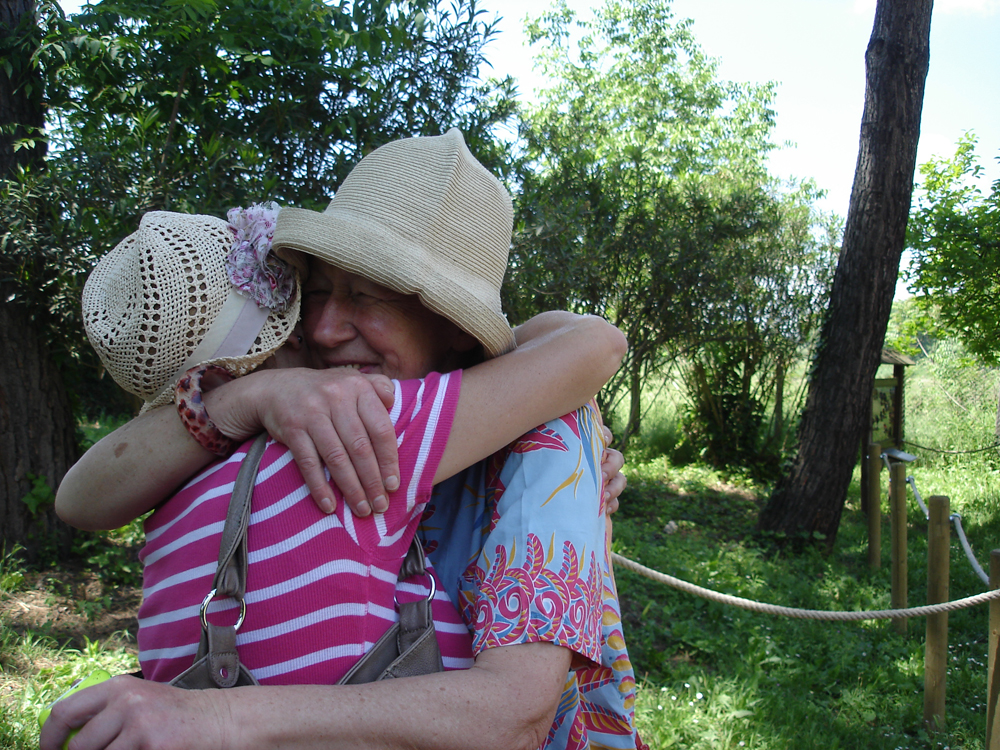giovedi 6 agosto, alle ore 19, STUDIO.RA – Roma
Lo studio.ra presenta Puki Pacifista, opere su carta dell’artista americana Reynolds. I Pukis di Reynolds sono piccoli acquerelli di “guerriglia” che deridono i capolavori di pittura, viaggiando in tutto il mondo. I Pukis glorificano il mondo della cultura celebrando storie scomparse attraverso la visualizzazione di ciò che di solito è nascosto. I Pukis sono accompagnati da una video-installazione di “Puki Procession“, un progetto in movimento in cui i partecipanti, vestiti in vesti rituali, portano i Dipinti Puki su Banner. A ciò si affiancherà la performance partecipativa in onore dell’antica Goddess, antichità scomparsa in Iraq, e dei riti indigeni che sono minacciati da culture egemoniche. Partendo dallo studio.ra, i partecipanti percorreranno un breve itineriano del Parco archeologico dell’Appia Antica, nella Valle della Caffarella, seguendo le sacre rive del fiume Almone, fino alla Fonte della Ninfa Egeria: un territorio storico e artistico pieno di richiami allegorici e leggendari.
Reynolds ha studiato pittura con Richard Pousette-Dart al Sarah Lawrence College, e si è laureata con una specializzazione in Women’s History (”Le Donne nella Storia“). Ha conseguito anche un BFA e un MFA dalla Scuola di Arti Visive. Ha insegnato per sette anni presso il Guggenheim Museum, attualmente è istruttore presso il Brooklyn Museum, e in una Family Programs di artisti per la American Folk Art Museum. Una delle sue più recenti mostre personali è stata “Imagina a Vagina” in Brasile. Nel 2008, le acqueforti di Reynolds hanno illustrato “Moving Mediators: Ghosts of Interventions Past and Present” al Museum Man in Valparaiso, Cile insieme alle opere di David Medalla e Jill Rock. Al Museo Man, diretto da Adam Nankervis, sono state esposte anche le Puki MOMdonnas in una mostra personale “Il Puki Adventus” a Liverpool, in Inghilterra. Fra le numerose mostre ricordiamo “Blender”, a cura di Cordy Ryman a Sundaram Tagore Gallery di New York, e “Close to the Edge” una mostra itinerante con Kevin Sampson, che comprendeva il recente arresto di Danny Simmons del Corridoio Galleria nel 2009. Reynolds ha partecipato ad ogni Biennale di Londra dal 2000, compresa la “Pollinations” a Berlino nel 2003. Nel 2008, le Pukis sfilate “La Pucelle Puki” hanno attraversato Parigi con i partecipanti alla Biennale di Londra per onorare la pace.
Percorso del Puki Parade del 6 agosto 2009, ore 19.
Il Puki Parade partirà da STUDIO.RA il 6 Agosto alle ore 19. Condurrà gli spettatori e partecipanti e ritornerà per un rinfresco nello stesso punto in cui è partito. L’artista ha creato i costumi per coloro che desiderano partecipare. Quanti intendono celebrare la “Puki” (vagina è il significato in lingua filippina) possono portare anche i propri costumi rituali, di feste o sagre.
Per ulteriori informazioni
contattare Raffaella Losapio
(tel. +39 06 43417800 – +39 3491597571)
o l’artista Reynolds
(codice internazionale di linea) – 1 917 328 0386.
Per altri approfondimenti sull’artista
www.reynoldsnart.com
e il link per vedere il video “The Puki Procession”
http://www.youtube.com/watch?v=73OyJiHw8G4
SCHEDA MOSTRA
studio.ra
Via Bartolomeo Platina, 1/F – 00179 Roma
Tel. 06 43417800 – 3491597571
www.studiora.eu info@studiora.eu
Periodo mostra: dal 6 al 14 Agosto 2009
Orario: da lunedì a domenica – dalle 10 alle 13 e dalle 17 alle 20,30.
PER ARRIVARE
Dalla Stazione Termini: Metro Linea A (direzione Anagnina), stop Furio Camillo.
Dal Centro: Metro Linea A (direzione Anagnina); bus 665 – 628 – 87.
Parcheggio libero per auto nei pressi della Galleria (Zona Appio Latino).
Dall’aeroporto di Fiumicino
Prendere la linea FR1 (Fara Sabina – Montelibretti) per 5 fermate FR1 ogni 15 min.
fino alla fermata MONSELICE/STAZIONE TUSCOLANA.
Successivamente prendere la linea 665 (PORTA S. GIOVANNI (MA) per 6 fermate 665 ogni 30 min.
Scendere alla fermata PLATINA, direttamente davanti allo studio.ra.
Artist Performance and Reception:
Thursday, August 6 th, 7p.m. | studio.ra – Roma
studio.ra is pleased to present ’Puki Pacifista’, by the American artist Reynolds. Reynolds’s ’Pukis’ are small watercolors on paper that have travelled around the world in transitory ’guerilla’ installations that mock masterpiece painting. Pukis glorify world culture by honoring disappeared histories through the display of what is usually hidden. The Pukis are accompanied by a video installation of the ’Puki Procession’, the ongoing performance project in which the participants, dressed in ritual vestments, carry the Puki paintings on banners. The participatory performance honors the ancient Goddess antiquities lost from Iraq, and indigenous rituals, which are threatened by hegemonic cultures.
Departing from STUDIO.RA, the performance will march along a route that includes the archeological park of the Appia Antica, the Caffarella Valley and, following the banks of the sacred river Almone, conclude at the source of Ninfa Egeria.
Reynolds studied painting with Richard Pousette-Dart at Sarah Lawrence College, and graduated with a concentration in Women’s History. She also has a BFA and an MFA from School of Visual Arts. She taught at the Guggenheim Museum for seven years; currently she is a Gallery Studio Instructor at the Brooklyn Museum, and a Family Programs artist for the American Folk Art Museum. Her most recent one-person show was “Imagina a Vagina” in Brazil.
In 2008, Reynolds’s etchings were featured in “Moving Mediators: Ghosts of Interventions Past and Present” at Museum Man in Valparaiso, Chile, along with works of David Medalla and Jill Rock. Museum Man, directed by Adam Nankervis, also featured the Puki MOMdonnas in a one- person show “The Puki Adventus”, in Liverpool, England.
Group shows include “Blender”, curated by Cordy Ryman at Sundaram Tagore Gallery in NYC, and “Close to the Edge” a traveling exhibition co-curated with Kevin Sampson, which included a recent stop at Danny Simmons’s Corridor Gallery in 2009.
Reynolds has participated in every London Biennale since 2000, including the “Pollinations” in Berlin in 2003. In 2008, the Pukis paraded through Paris with London Biennale participants to honor peace in “La Pucelle Puki”.
The Puki Parade will depart from the gallery on 6th August at 7 p.m. and lead spectators and participants back to the gallery for the reception.
Reynolds The artist has make up and costumes for those who wish to participate.
Participants wishing to honor the “Puki” (meaning vagina in Filipino) may bring their own carnival costumes.
For further details contact
Raffaella Losapio at info@studiora.eu,
by phone at 0039 06 4341800 – 00039 3491597571
or the artist Reynolds
at (international dial code)- 1 917 328 0386.
For further details about the artist, Reynolds
www.reynoldsnart.com
and to watch the video of “The Puki Procession”:
http://www.youtube.com/watch?v=73OyJiHw8G4
EXHIBITION DETAILS
studio.ra
Via Bartolomeo Platina, 1/F – 00179 Roma
Tel. 06 43417800 – 3491597571
www.studiora.eu info@studiora.eu
Period: August 6-14, 2009
Opening hours: Monday to the Sunday. 10-13 & 17-20.30.
GETTING THERE
From ’Termini’ station: take metro line A in the direction of ’Anagnina’, to the ’Furio Camillo’ stop.
From the centre: take metro line A in the direction of ’Anagnina’ and bus 665 – 628 – 87.
Ample Free parking in the neighbourhood of the gallery (Zona Appio Latino).
From Fiumicino airport
Take Line No. FR1 (Fara Sabina-Montelibretti) for 5 stops (the trains run every 15 mins)
and get off at Tuscolana Station, then go to stop MONSELICE/STAZIONE TUSCOLANA and take Line No 665 (PORTA S. GIOVANNI (MA) for 6 stops (the trains run every 30 mins). Get off at PLATINA stop which is directly in front of the studio.ra.
